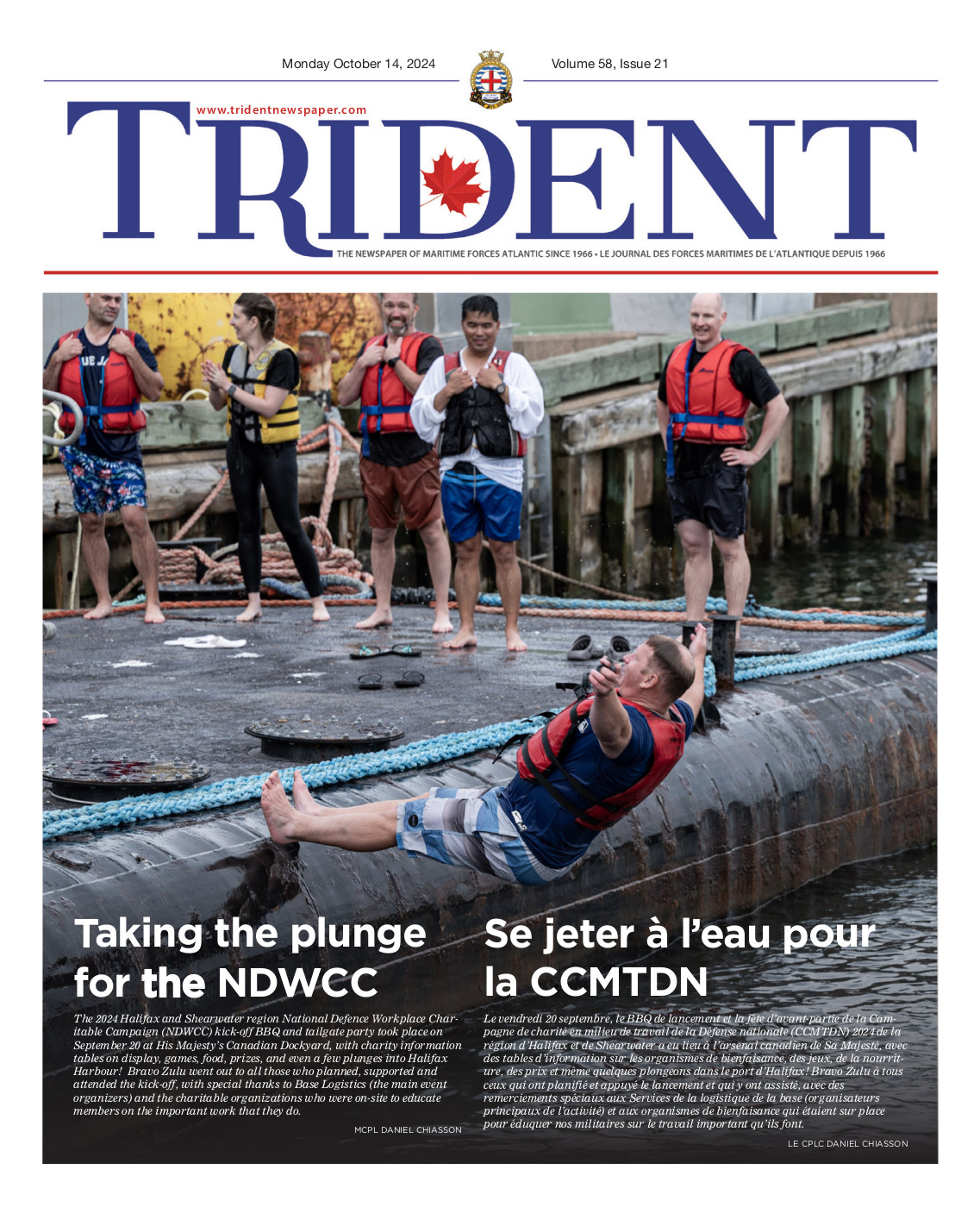
LS MIKE GOLUBOFF, MARPAC IMAGING SERVICES
Former HMCS Protecteur crew adapting to life on board MV Asterix
By Sgt R.D. MacPherson,
NRU Asterix
HMCS Protecteur, the lead ship of the decommissioned Protecteur-class replenishment oilers, had a storied and illustrious 46 years of service with the Royal Canadian Navy. For the majority of her crew, from her launch in 1968 leading all the way to 2015, this would be the only class of tanker they would sail in through their entire military career.
For a small group of CAF sailors, Protecteur was not the end, but only the beginning. With the launch of MV Asterix in 2018, some of the former HMCS Protecteur crew have returned to the Replenishment at Sea (RAS) deck and are rapidly adapting to the new ship. These veteran sailors have been quick to note there are many differences between their former ship, built in 1968, versus their new home in 2018.

SUBMITTED
MV Asterix is unlike any ship in the fleet as its crew is a mix of CAF members and Federal Fleet Services (FFS) civilian personnel. The combination introduces a different dynamic on how day-to-day business is conducted for the crew. CAF members work alongside FFS civilians in all aspects of operations and maintenance.
“Whether it be on the RAS deck, the bridge, the helo-deck or even in the gym, both military and civilian personnel are fully integrated together. Working with civilian personnel has its challenges but the FFS crew are excellent and have proven to be extremely valuable members of the team,” said PO2 Ley Ireland, a five-year Protecteur veteran.
The new RAS equipment aboard Asterix makes operations easier and more efficient. The technologically advanced digital operating system now requires only a single cage operator vice the two operators that were required onboard Protecteur. It also offers many innovative options and presets that were just not possible on the analog system it has replaced. Mechanical systems such as the winches, motors and pumps have also been upgraded compared to those used on Protecteur.
While technologically more efficient, Asterix still has some growing pains as trialing and troubleshooting is still required as experience develops. Protecteur, on the other hand, had the benefit of more than 40 years of experience passed on from generations of seasoned sailors, enabling a tried and true method of operation.
Both PO1 Nicholas Major and PO2 Jason Bosdet, Navcomms with 7 and 4.5 years on board Protecteur respectively, agree communications has also changed a great deal on the newship.
“On Protecteur, the communication equipment was a little outdated, so we had to learn how to do make old things meet new requirements. On the other hand, everything on the Asterix is brand new so we’ve had to come up with new solutions to meet our old procedures,” PO2 Bosdet said.
RAS operations on Protecteur used a combination of hand signals and vocal commands specific to every evolution. Each of the four cages onboard Protecteur was equipped with an open window, so Cage Operators could speak directly with the Station Captain. MV Asterix has an enclosed RAS Control (RASCO) which requires the use of UHF radios in addition to hand signals to ensure commands are communicated correctly and efficiently. Also, Asterix does not routinely use ship-wide pipes for daily activities and instead pipes are strictly reserved for emergencies and important general announcements. It is not used for piping personnel around the ship or daily routines.
“We’ve had to adapt by utilizing handheld UHF radios to ensure information to personnel is relayed efficiently. On the upside, it is nice not to wake up to the sound of a boatswain’s call or the testing of the general alarm first thing in the morning. It really places the responsibility on our junior sailors to make good decisions and show up on time,” says PO1 Tim Rose, a four-year Protecteur veteran
Accommodations aboard MV Asterix are “without a doubt impressive and the envy of the RCN”, says PO2 Justin Schnob. Quality of life has improved drastically. Most crew members have the privilege of having their own personal cabin. Within each cabin is a desk, single bed, TV, 3 lockers, as well as their own heads and shower. Not only that, MV Asterix has ship-wide Wifi internet, allowing easy contact with family and friends back at home. On board Protecteur, depending on your rank level, sailors were sharing a mess ranging anywhere from 2 to 18 other people. As well, crew were sharing heads and wash places with multiple large messes. Asterix, however, has only a single combined galley for meals, whereas Protecteur, like all other ships in the RCN, had three dining messes segregated by rank.
Many years have passed between the launch of HMCS Protecteur and MV Asterix. With the passage of time also brought significant change. Asterix and Protecteur are stark contrasts in terms of cage operations, RAS equipment, communications and accommodations. Despite all their differences, Protecteur’s veteran sailors have adapted to their new environment, remain flexible, and are ready to conduct RAS operations safely and effectively whenever duty calls.





